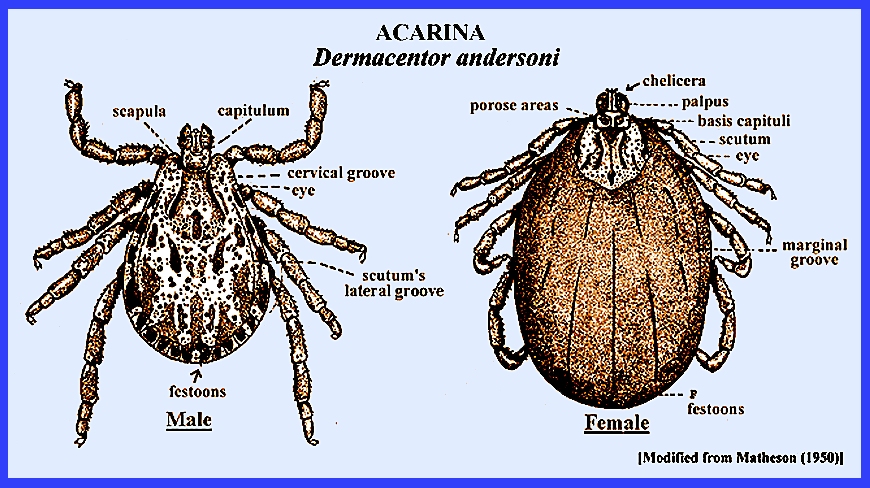File: <tularemia.htm> <Medical
Index> <General Index> Site Description Glossary <Navigate
to Home>
|
TULAREMIA DISEASE (Contact) Please CLICK on
image & underlined links for details:
There are many reservoir hosts including rodents, deer and
beavers, some bird species and carnivores.
But the principal reservoir host is the cottontail rabbit, Sylvilagus spp. Handling infected animals, both alive and
dead, may spread infection. Matheson
(1950) reported that the disease is highly infectious to humans and is
transmitted by various arthropods either by their bites, their crushed bodies
or their feces or by the tissues or body fluids of infected rodents. He also noted that it is occasionally water-borne
and infection can result from drinking or coming into contact with infected
water. Although many human infections
are traceable to contact with rabbits, certain tick species are of great
importance in maintaining the disease among the natural reservoirs (Matheson
1950). A number of hard tick species spread the disease. In Europe the main vectors are Ixodes ricinus
and Dermacentor spp. In North America various hard ticks and
other arthropods are vectors such as the tabanid fly, Chrysops
discalis. However in
North America of primary importance are the ticks Haemaphysalis
leporis-palustris, Dermacentor andersoni, D.
variabilis. Avoidance with contaminated sources is of the utmost
importance. When infections do occur
prompt medical attention is essential. = = = = = = = = = = = = = = = = = =
= Key References: <medvet.ref.htm> <Hexapoda> Burroughs, A. R. et al. 1945. A field study of latent
tularemia in rodents with a list of all known naturally infected
vertebrates. J. Infect. Dis. 76(2): 115-119. Camicas, J. L., J. . Hervy, F. Adam & P.
C. Morel. 1998. The ticks of the world (Acarida,
Ixodida): Nomenclature, Described
Stages, Hosts, Distribution. Paris:
Editions de l'ORSTOM. CDC.
2005. Tularemia transmitted by
insect bites. Wyoming 2001-2003 MMWK
Weekly 54(7): 170-3. Francis, E.
1929. Arthropods in the
transmission of tularemia. Trans. 4th
Internat. Cong. Entomol. 2: 929-944. Gammons, M. & G. Salam. 2002. Tick
removal. Amer. Fam. Physician
66: 643-45. Gothe, R., K. Kunze & H. Hoogstraal. 1979.
The mechanisms of pathogenicity in the tick paralyses. J. Med. Ent. 16: 357-69. Jellison, W. L. & R. R. Parker. 1945.
Rodents, rabbits and tularemia in North America. Amer. J. Trop. Med. 25: 349-362. Legner, E. F. 1995. Biological control of Diptera of medical
and veterinary importance. J. Vector
Ecology 20(1): 59_120. Legner, E. F. 2000.
Biological control of aquatic Diptera. p. 847_870.
Contributions to a Manual of Palaearctic Diptera, Vol.
1, Science Herald, Budapest. 978 p. Matheson, R. 1950.
Medical Entomology. Comstock
Publ. Co, Inc. 610 p. Needham, G. R. & P. D. Teel. 1991.
Off-host physiological ecology of ixodid ticks. Ann. Rev. Ent. 36: 313-52. Service, M.
2008. Medical Entomology For
Students. Cambridge Univ. Press. 289 p Sonenshine, D. E., R. S. Lane & W. L. Nicholson.
2002. Ticks (Ixodida). IN:
Medical & Veterinary Entomology, ed. G.
Mullen & L. Durden,
Ambsterdam Acad. Press. pp
517-58. Sonenshine, D. E. & T. N. Mather (eds.) 1994.
Ecological Dynamics of Tick-Borne Zoonoses. Oxford Univ. Press, New York. |
